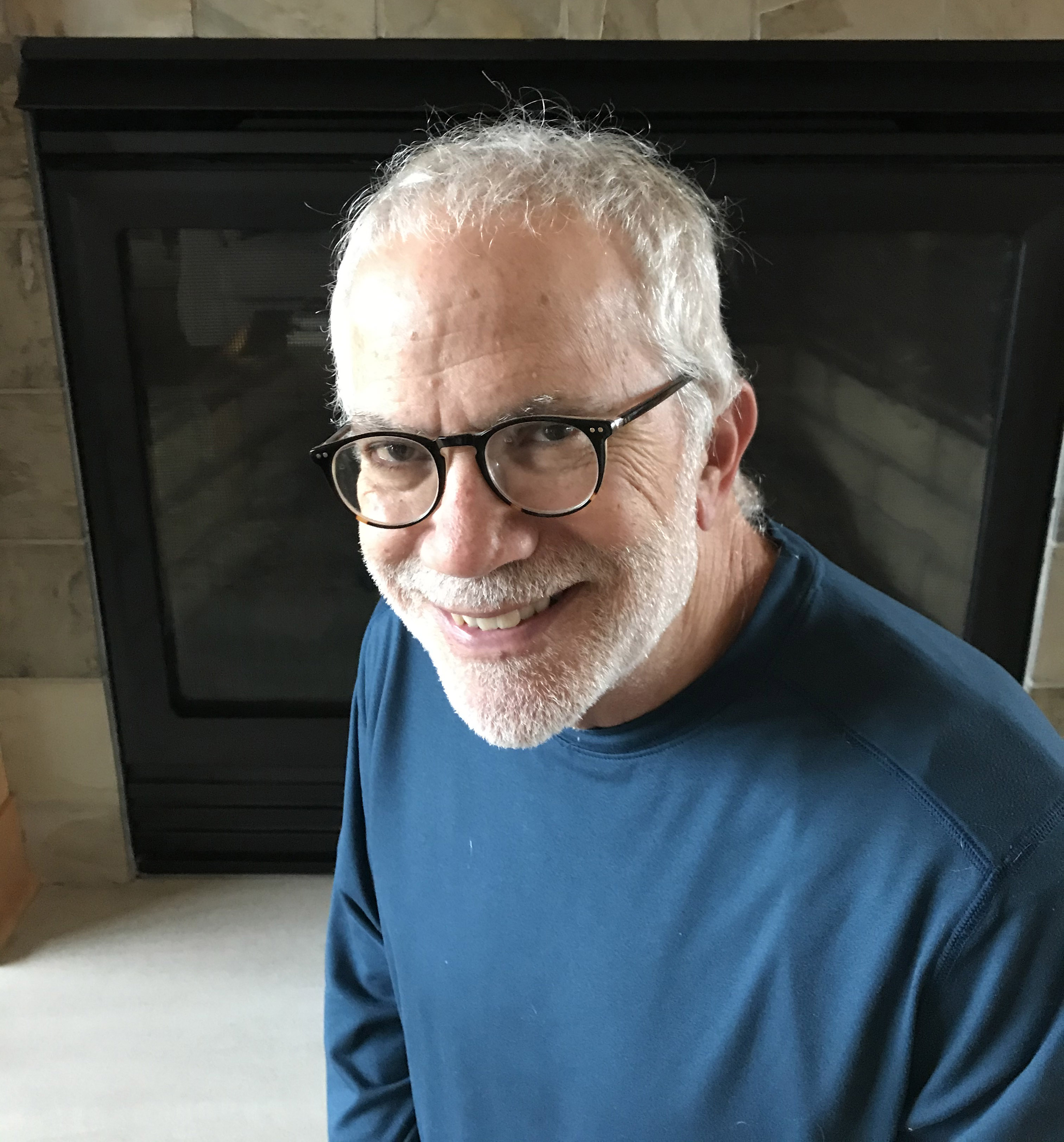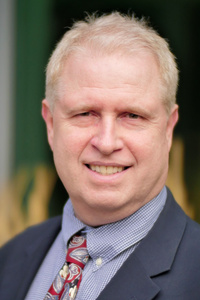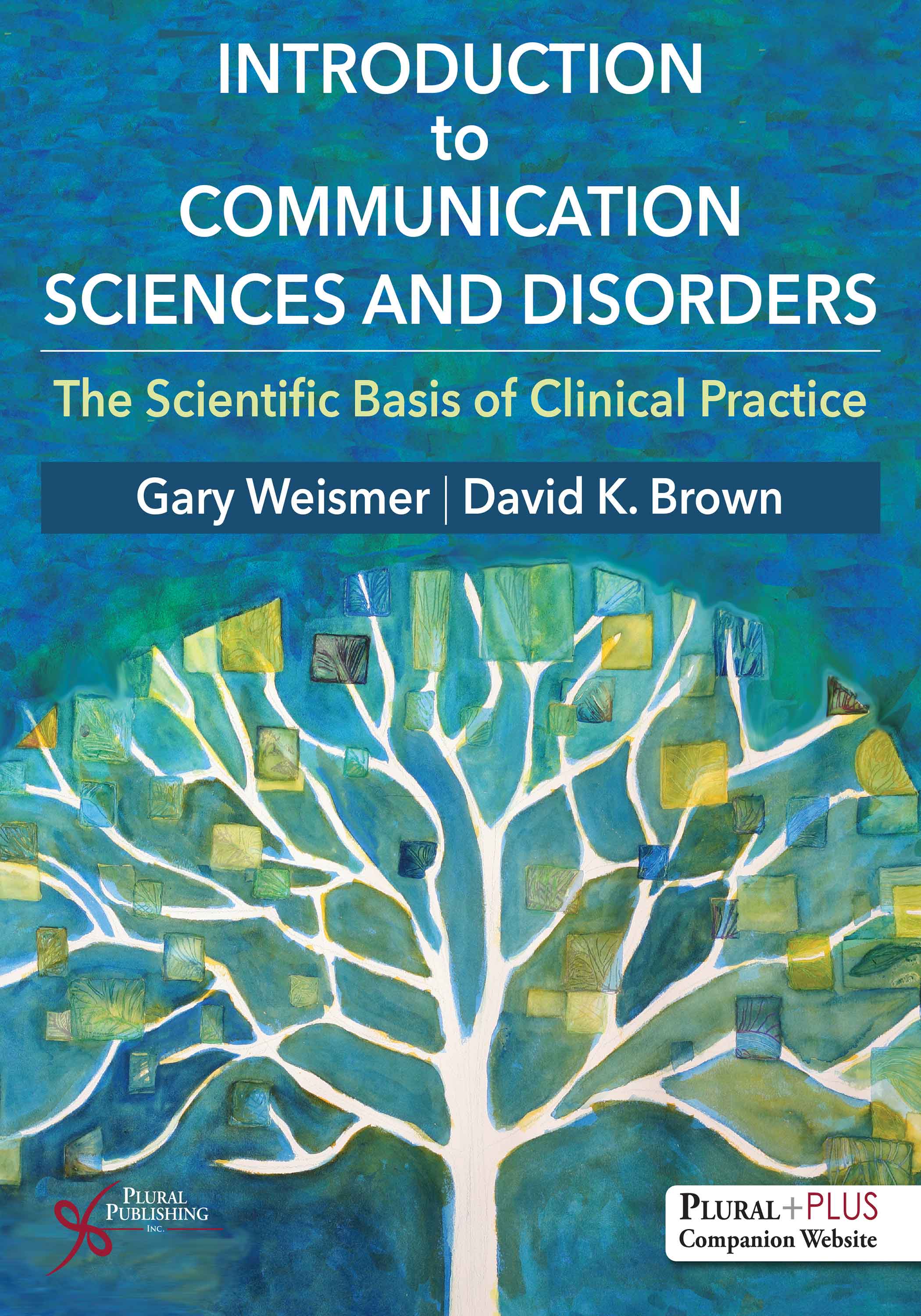
Introduction to Communication Sciences and Disorders: The Scientific Basis of Clinical Practice
First Edition
Gary Weismer, David K. Brown
Details: 388 pages, Full Color, Softcover, 8.5"x11"
ISBN13: 978-1-59756-297-3
© 2021 | Available
For Instructors
Purchase
Introduction to Communication Sciences and Disorders: The Scientific Basis of Clinical Practice is designed for undergraduate students who are taking a first course in the discipline of Communication Sciences and Disorders (CSD). The textbook presents students with the range of communication impairments in society, the consequences of those impairments for the persons who have them as well as for their family members, and the treatments that are available to lessen or remediate the effects of the disorders.
The text is organized into three sections on Language, Speech, and Hearing. Each chapter is concise and written to convey the core information for each topic. The material is presented in a way that maintains the interest of the student through expository clarity and brevity in a course that treats so many different facets of a complex discipline. The textbook also serves the needs of the instructor by organizing the material in a teachable way.
Introduction to Communication Sciences and Disorders emphasizes the scientific basis of the field by presenting specific clinical examples to demonstrate the translation of laboratory science to clinical aspects of speech, language, and hearing disorders. Students will leave the course a good deal more knowledgeable and sensitive about what it means to be communicatively impaired in contemporary society.
Key Features
- Consistency of presentation across chapters as well as clearly-stated relationships between information in different chapters
- Features beautiful original, full-color illustrations designed to be instructive learning tools
- Each chapter begins with an introduction and ends with a summary to present and review key concepts
- Modern and up-to-date treatment options written for the needs of the field of communication sciences and disorders
- Covers the core essentials of the subject concisely and to the point
- Structured to aid the instructor with sections easily assimilated into extant lectures
- A PluralPlus companion website with ancillary materials for instructors, including quizzes, an image bank, and PowerPoint lecture slides.
Praise from Instructors
“I found the content to be thorough and with some scientific detail, but entirely approachable for undergraduate students. The inclusion of anecdotes and analogies was entertaining and I think the students will enjoy this. The authors have done an impressive job of thoroughly describing the developmental processes without getting too mired in detail or, conversely, staying too superficial.”
—Sue Caspari, MA, CCC-SLP, Instructor, Communication Sciences and Disorders, Temple University
“This is an ideal text for surveying the domain of communication sciences and disorders. Other introductory texts often introduce clinical assessment and treatment aspects of CSD rapidly, resulting in a course that is too advanced and detailed for the entry-level learner. Weismer’s decision to largely exclude these aspects from the text reflects his considerable experience in teaching this specific style of course. In its place, he has offered a framework for immersing students in the scientific foundations of CSD with clinical examples, where they can build a careful understanding of theories and research that drive the field. Weismer has indeed hit the Goldilock’s solution – just right.”
—Rachel Kasthurirathne, MA, CCC-SLP, Instructor of Record, PhD Student, Indiana University Bloomington
“I like the writing style and the way the authors take you back to previous information to make connections for the reader. I have read other texts that contain too much detail. I think this is a good amount of material and a good level for undergraduate students. The figures are beautiful—very clear and good coloring. I believe this is a very valuable text that will give an excellent introduction to students about the field of Speech-Language Pathology and Audiology.”
—Gretchen Bennett, MA, CCC-SLP, Coordinator of Speech Language Clinical Services, Clinical Associate Professor/Supervisor, Speech-Language and Hearing Clinic, SUNY at Buffalo
“The chapters are well organized and contain consistent focus. I really like how the chapters are organized into language, speech, and hearing. The book was easy to read and difficult concepts were explained clearly in a way that undergraduate students would understand. I like the trivia boxes. Overall, this textbook provides a thorough introduction to communication sciences and disorders.”
—Florence Lim-Hardjono, MA, PhD (ABD), CCC-SLP, Assistant Professor, Communication Sciences and Disorders, Mount Vernon Nazarene University
“This Introduction to Communication Sciences and Disorders (CS&D) is written by two professors; Gary Weismer, Professor Emeritus in the Department of Communication Sciences and Disorders at the University of Wisconsin-Madison, USA; and David K. Brown, Professor in the School of Audiology at Pacific University, USA. It has been written ‘for undergraduate students who are taking a first course in the discipline of CS&D’ and is organized ‘into three sections on Language, Speech and Hearing’. This introduction is divided into concise chapters covering paediatric and adult communication disorders. It is a useful introduction and reference book for students and newly qualified practitioners, providing an overview of key elements of study […] The book is accompanied by registered access to a companion website for Students and Instructors [assumed ‘Lecturers’], at whom the book is also targeted. Student access provides clear Learning Objectives for each chapter; for example, the following Learning Objective in Chapter 1: ‘Explain what the term “Evidence-based practice” means and how it is related to different types of research evidence.’
The field of CS&Ds are put into a clear, historical context in Chapter 1 to establish the discipline, and stresses the importance of interdisciplinary working and evidence-based practices.
Chapters provide introductions to the nervous system and the key structures and processes involved in language, speech and hearing; language science; and communication in a multicultural society, which precede chapters on the foundations of speech and language development prior to covering paediatric and adult language disorders. The authors clearly outline the ‘integrated nature of language, speech and hearing processes’ and that there is not a ‘fixed formula . . . used for the inclusion of clinical information’ within the book.
Each chapter is a succinct introduction to a key clinical area of CS&D. Chapter 7 ‘Paediatric
Language Disorders I’ includes a section on the reviewer’s area of clinical specialism ‘Language Delay and Autism Spectrum Disorder’. As in other sections of the book, a brief summary of the disorder is explained, and key points from earlier parts of the book are referred to in order to ensure the reader is able to contextualize the disorder, e.g. the three major components of language are referred to from Chapter 3. Throughout the book references to key research articles are provided, which are neatly included to evidence the information provided. The authors have taken care to include recent references throughout the book. There are many from 2010 onwards balanced with key references from across earlier decades, which is a good feature alongside current ‘socio-cultural’ references about the disorders outlined, e.g. an explanation of ‘Neurotypical’ and ‘Neurodiverse’ within the autism community in Chapter 7. The book provides many usefully highlighted features, such as summaries of disorders, diagrams and photos to provide real-life examples of the disorders. As an example, the illustrations and patient transcriptions used to support the description of types of aphasia are particularly insightful.”
—Tom Bailey, Beyond Autism Schools, in Child Language, Teaching and Therapy (2020)
Preface
Acknowledgments
Reviewers
Chapter 1. Introduction to Communication Sciences and Disorders
Introduction: Communication Sciences and Disorders as a Discipline
Communication Sciences and Disorders: The Whole Is Greater than the Sum of Its Parts
An Interdisciplinary Field
Translational Research
Does the Basic Science Work? Does the Clinic Work?
Evidence Based Practice
A Typical Undergraduate Curriculum
Who Are the Professionals in Communication Sciences and Disorders?
Preparation for, and the Profession of, Speech-Language Pathology
Preparation for, and the Profession of, Audiology
Order of Chapters in the Text
Chapter Summary
References
Chapter 2. The Nervous System: Language, Speech, and Hearing Structures and Processes
Introduction
Central and Peripheral Nervous Systems
The Neuron
The Synapse
Tour of Gross Neuroanatomy
Frontal Lobe
Occipital Lobe
Temporal Lobe
Parietal Lobe
Hidden Cortex
Subcortical Nuclei
Brain Stem, Cerebellum, and Spinal Cord
The Auditory Pathways
The Dominant Hemisphere and the Perisylvian Language Areas
Arcuate Fasciculus (Dorsal Stream) and Ventral Stream
Functional Magnetic Resonance Imaging and Speech and Language Brain Activity
Functional Magnetic Resonance Testing
Diffusion Tensor Imaging (DTI)
Chapter Summary
References
Chapter 3. Language Science
Introduction
What is Language?
Language: A Conventional System
Language: A Dynamic System
Language Is Generative
Language Uses Mental Representations
Language is Localized in the Brain
Components of Language
Form
Social Use of Language (Pragmatics)
Language and Cognitive Processes
Why
How
When
Chapter Summary
References
Chapter 4. Communication in a Multicultural Society
Introduction
Why It Matters
Difference Versus Disorder
Standardized Testing and Language Difference Versus Disorder
Accent, Dialect, and Culture
Accent
Dialect
Code Switching
Foreign Accent
Bilingualism and Multilingualism
Chapter Summary
References
Chapter 5. Preverbal Foundations of Speech and Language Development
Introduction
Some Preparatory Notes on Developmental Chronologies
0-3 Months: Production
0-3 Months: Perception and Comprehension
3-8 Months: Production
3-8 Months: Perception and Comprehension
8-12 Months: Production
8-12 Months: Perception and Comprehension
Gesture and Preverbal Language Development
Chapter Summary
References
Chapter 6. Typical Language Development
Introduction
12-18 Months
18-24 Months
Three Years (36 Months)
Multiword Utterances, Grammatical Morphology
Expanding Utterance Length: A Measure of Linguistic Sophistication
Grammatical Morphology
Typical Language Development in School Years
Metalinguistic Skills
Pragmatic Skill: Discourse
Complex Sentences
Sample Transcript
Chapter Summary
References
Chapter 7. Pediatric Language Disorders I
Introduction
Specific Language Impairment/Developmental Language Disorder
Language Characteristics of Children with SLI/DLD
Summary of the Language Disorder in SLI/DLD
What Is the Cause of SLI/DLD?
The Role of Genetics in SLI/DLD
Language Delay and Autism Spectrum Disorder
Language Characteristics in ASD
Language Delay and Hearing Impairment
Epidemiology of Hearing Loss
Language Characteristics in Hearing Impairment
Speech and Language Development and Hearing Impairment
Chapter Summary
References
Chapter 8. Pediatric Language Disorders II
Introduction
Criteria for a Diagnosis of ID
Down Syndrome (DS): General Characteristics
Epidemiology and the DS Phenotype
Language Characteristics in DS
Fragile X Syndrome: General Characteristics
Epidemiology of FXS
Language Characteristics in FXS
Chapter Summary
References
Chapter 9. Language Disorders in Adults
Introduction
Review of Concepts for Brain Speech Structure and Function for Speech, Language and Hearing
Cerebral Hemispheres
Lateralization of Speech and Language Functions
Language Expression and Comprehension Are Represented in Different Cortical Regions of the Left Hemisphere
Connections Between Different Regions of the Brain
Perisylvian Speech and Language Areas of the Brain
Adult Language Disorders: Aphasia
Classification of Aphasia
Aphasia Due to Stroke: A Summary
Traumatic Brain Injury and Aphasia
Nature of Brain Injury in TBI
Language Impairment in TBI
Dementia
Brain Pathology in Dementia
Language Disorders in Dementia
Chapter Summary
References
Chapter 10. Speech Science I
Introduction
The Speech Mechanism: A Three-Component Description
Respiratory System Component (Power Supply for Speech)
The Respiratory System and Vegetative Breathing
Speech Breathing
Clinical Applications: An Example
The Larynx (Sound Source for Speech)
Laryngeal Cartilages
Laryngeal Muscles and Membranes
Phonation
Characteristics of Phonation
Clinical Applications: An Example
Upper Airway (Consonants and Vowels)
Muscles of the Vocal Tract
Vocal Tract Shape and Vocalic Production
Velopharyngeal Mechanism
Valving in the Vocal Tract and the Formation of Speech Sounds
Coarticulation
Clinical Applications: An Example
Chapter Summary
References
Chapter 11. Speech Science II
Introduction
The Theory of Speech Acoustics
The Sound Source
The Sound Filter
Vowel Sounds Result from the Combination of Source and Filter Acoustics
Resonant Frequencies of Vowels Are Called Formants: Spectrograms
The Tube Model of Human Vocal Tract Makes Interesting Predictions and Suggests Interesting Problems
A Spectrogram Shows Formant Frequencies and Much More
Speech Synthesis
Speech Recognition
Speech Acoustics and Assistive Listening Devices
Speech Perception
The Perception of Speech: Special Mechanisms?
The Perception of Speech: Auditory Theories
Motor Theory and Auditory Theory: A Summary
Top-Down Influences: It’s Not All About Speech Sounds
Speech Intelligibility
Chapter Summary
References
Chapter 12. Phonetics
Introduction
International Phonetic Alphabet
Vowels and Their Phonetic Symbols
Consonants and their Phonetic Symbols
Clinical Implications of Phonetic Transcription
Chapter Summary
References
Chapter 13. Typical Phonological Development
Introduction
Phonetic and Phonological Development: General Considerations
Phonetic and Phonological Development
Phonetic Development
Phonological Development
Typical Speech Sound Development
Determination of Speech Sound Mastery in Typically-Developing Children
Possible Explanations for the Typical Sequence of Speech Sound Mastery
Phonological Processes and Speech Sound Development
Phonological Development and Word Learning
Chapter Summary
References
Chapter 14. Motor Speech Disorders in Adults
Introduction
Classification of Motor Speech Disorders
Dysarthria
Subtypes of Dysarthria
The Mayo Clinic Classification System for Motor Speech Disorders
The Dysarthrias: A Summary
Apraxia of Speech
Chapter Summary
References
Chapter 15. Pediatric Speech Disorders I
Introduction
Speech Delay
Diagnosis of Speech Delay
Quantitative Measures of Speech Delay and Speech Intelligibility
Speech Delay: Phonetic, Phonological, or Both?
Additional Considerations in Speech Delay and Residual and Persistent Speech Sound Errors
Speech Delay and Genetics
Childhood Apraxia of Speech
CAS Compared with Adult Apraxia of Speech
CAS: Prevalence and General Characteristics
CAS: Speech Characteristics
CAS and Overlap with Other Developmental Delays
CAS and Genetics
Chapter Summary
References
Chapter 16. Pediatric Speech Disorders II
Introduction
Childhood Motor Speech Disorders: Cerebral Palsy
Types of Cerebral Palsy
Dysarthria in Cerebral Palsy
Childhood Motor Speech Disorders: Traumatic Brain Injury and Tumors
Traumatic Brain Injury
Brain Tumors
Treatment Options and Considerations
Chapter Summary
References
Chapter 17. Fluency Disorders
Introduction
Incidence and Prevalence of Stuttering
Genetic Studies
Diagnosis of Developmental Stuttering
The Natural History of Developmental Stuttering
Stage I: Typical Dysfluencies
Stage II: Borderline Stuttering
Stage III: Beginning Stuttering
Stage IV: Intermediate Stuttering
Stage V: Advanced Stuttering
Recovery of Fluency
Possible Causes of Stuttering
Psychogenic Theories
Learning Theories
Biological Theories
Acquired (Neurogenic) Stuttering
Symptoms of Neurogenic Stuttering Compared with Developmental Stuttering
Treatment Considerations
Chapter Summary
References
Chapter 18. Voice Disorders
Introduction
Epidemiology of Voice Disorders
Initial Steps in the Diagnosis of Voice Disorders
Case History
Perceptual Evaluation of the Voice
Viewing the Vocal Folds
Measurement of Basic Voice Parameters
Classification/Types of Voice Disorders
The Hypo-Hyperfunction Continuum
Phonotrauma
Organic Voice Disorders
Functional Voice Disorders
Neurological Voice Disorders
Pediatric Voice Disorders
Prevalence of Childhood Voice Disorders
Types of Childhood Voice Disorders
Treatment of Childhood Voice Disorders
Chapter Summary
References
Chapter 19. Craniofacial Anomalies
Introduction
Definition and Origins of Craniofacial Anomalies
Embryological Development of the Upper Lip and Associated Structures
Embryological Errors and Clefting: Clefts of the Lip
Embryological Errors and Clefting: Clefts of the Palate
Cleft Lip With or Without a Cleft Palate; Cleft Palate Only (Isolated Cleft Palate)
Epidemiology of Clefting
Speech Production in CL/P and CPO
Diagnosis of VPI
VPI and Hypernasality
VPI, Consonant Articulation, and Speech Intelligibility
Clefting and Syndromes
Cleft Palate: Other Considerations
Chapter Summary
References
Chapter 20. Swallowing
Introduction
Anatomy of Swallowing
Esophagus
Stomach
The Act of Swallowing
Oral Preparatory Phase
Oral Transport Phase
Pharyngeal Phase
Esophageal Phase
Overlap of Phases
Breathing and Swallowing
Nervous System Control of Swallowing
Role of the Peripheral Nervous System
Role of the Central Nervous System
Variables That Influence Swallowing
Bolus Characteristics
Development
Age
Measurement and Analysis of Swallowing
Videofluoroscopy
Endoscopy
Client Self-Report
Health Care Team for Individuals with Swallowing Disorders
Chapter Summary
References
Chapter 21. Hearing Science I: Acoustics and Psychoacoustics
Introduction
Oscillation
Waveform
Spectrum
Waveform and Spectrum
Resonance
Psychoacoustics
Pitch
Loudness
Sound Quality
Chapter Summary
References
Chapter 22. Hearing Science II: Anatomy and Physiology
Introduction
Temporal Bone
Peripheral Anatomy of the Ear
Outer Ear (Conductive Mechanism)
Middle Ear
Inner Ear (Sensorineural Mechanism)
Chapter Summary
References
Chapter 23. Diseases of the Auditory System and Diagnostic Audiology
Introduction
Hearing Evaluation
Case History
Otoscopy
Immittance
Tympanometry
Acoustic Reflex Thresholds (ART)
Audiometric Testing
Physiological Responses
Vestibular Assessment
Audiometric Results
Type, Degree and Configuration of Loss
Hearing and Balance Disorders
Patient Examples
Chapter Summary
References
Chapter 24. Assistive Listening Devices
Introduction
Hearing Aids
Steps in Selecting and Fitting a Hearing Aid
Types of Hearing Aids
Hearing Aid Components
Auditory Implantable Devices
Bone-Anchored Implant (BAI)
Middle Ear Implant (MEI)
Cochlear Implant (CI)
Chapter Summary
Hearing Aids
Auditory Implantable Devices
References
Chapter 25. Aural Habilitation and Rehabilitation
Introduction
Aural Habilitation
Assessment of Communication Needs in Children
Pediatric Intervention
Components of a Family-Centered Intervention
Auditory Training in Aural Habilitation
Communication Options
Outcome Measures for Pediatrics
Aural Rehabilitation
Assessment of Communication Needs in Adults
Adult Intervention
Auditory Training in Aural Rehabilitation
Communication Strategies
Speechreading
Outcome Measures for Adults
Group Aural Rehabilitation
Chapter Summary
Aural Habilitation
Aural Rehabilitation
References
Index
Purchase of Introduction to Communication Sciences and Disorders: The Scientific Basis of Clinical Practice comes with access to supplementary student and instructor materials on a PluralPlus companion website.
STUDENTS:
To access the student materials, you must register the access code printed on the inside front cover of your book on the companion website.
INSTRUCTORS:
To access the instructor materials, you must contact Plural Publishing, Inc. to be verified as an instructor and receive your access code.
Email: instructormaterials@pluralpublishing.com
Tel: 866-758-7251 (toll free) or 858-492-1555

Hegde's PocketGuide to Communication Disorders
Second Edition
M.N. Hegde
Details: 496 pages, 2-Color, Softcover, 4.5" x 8"
ISBN13: 978-1-94488-314-0
© 2018 | Available
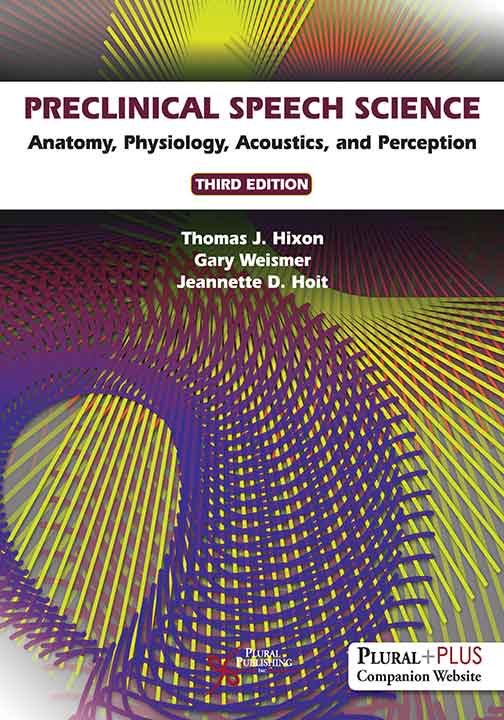
Preclinical Speech Science: Anatomy, Physiology, Acoustics, and Perception
Third Edition
Thomas J. Hixon, Gary Weismer, Jeannette D. Hoit
Details: 728 pages, Full Color, Hardcover, 8.5" x 11"
ISBN13: 978-1-63550-061-5
© 2020 | Available

Preclinical Speech Science Workbook
Third Edition
Jeannette D. Hoit, Gary Weismer
Details: 436 pages, B&W, Spiral Bound, 8.5" x 11"
ISBN13: 978-1-63550-063-9
© 2020 | Available

Comprehensive Dictionary of Audiology: Illustrated
Third Edition
Brad A. Stach
Details: 349 pages, B&W, Softcover, 7" x 10"
ISBN13: 978-1-94488-389-8
© 2019 | Available
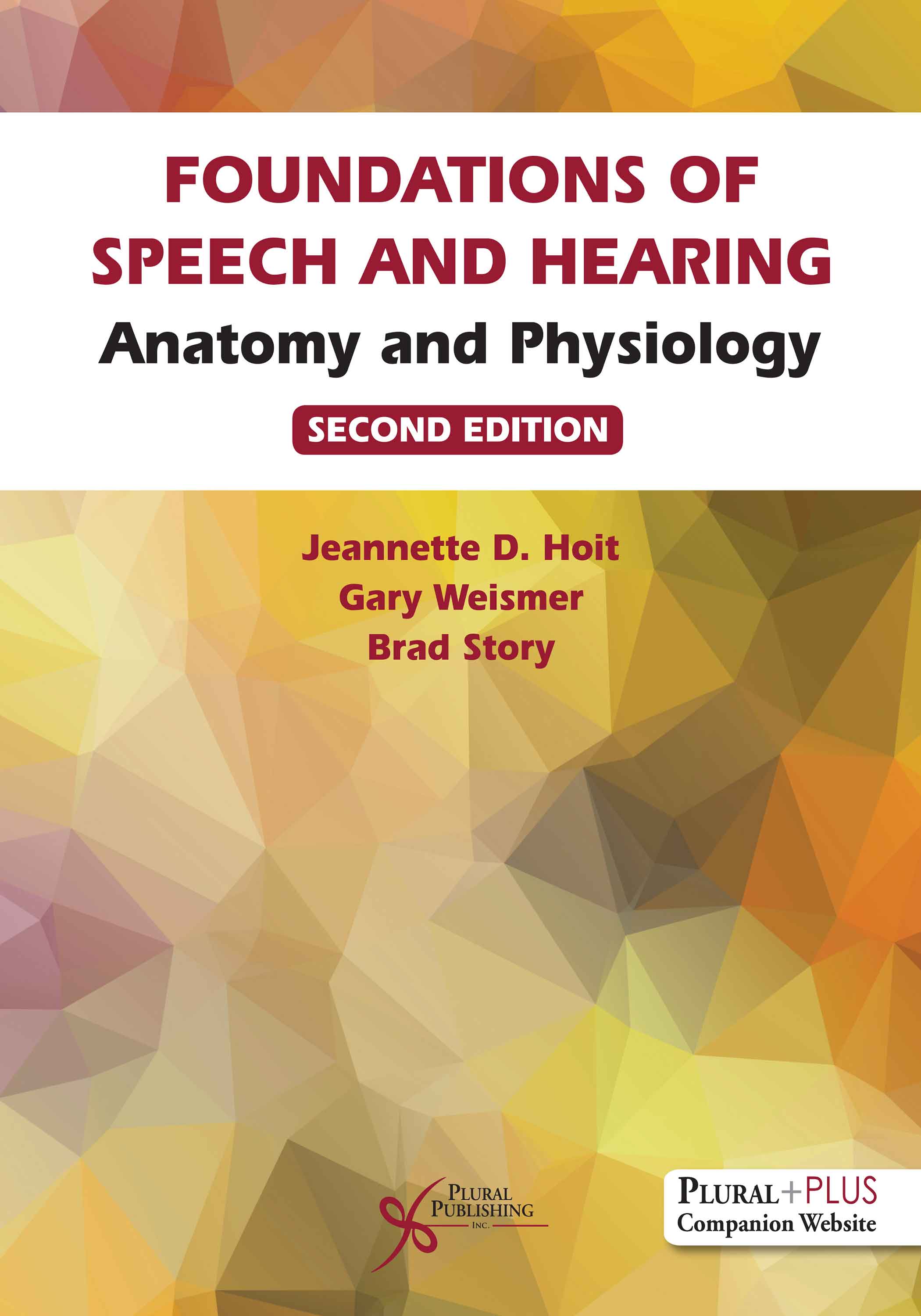
Foundations of Speech and Hearing: Anatomy and Physiology.
Second Edition
Jeannette D. Hoit, Gary Weismer, Brad H. Story
Details: 348 pages, Full Color, Hardcover, 8.5" x 11"
ISBN13: 978-1-63550-306-7
© 2022 | Available

The Communication Disorders Casebook: Learning by Example
Second Edition
Shelly S. Chabon, Ellen R. Cohn, Dorian Lee-Wilkerson
Details: 563 pages, B&W, Softcover, 8.5" x 11"
ISBN13: 978-1-63550-409-5
© 2025 | Available
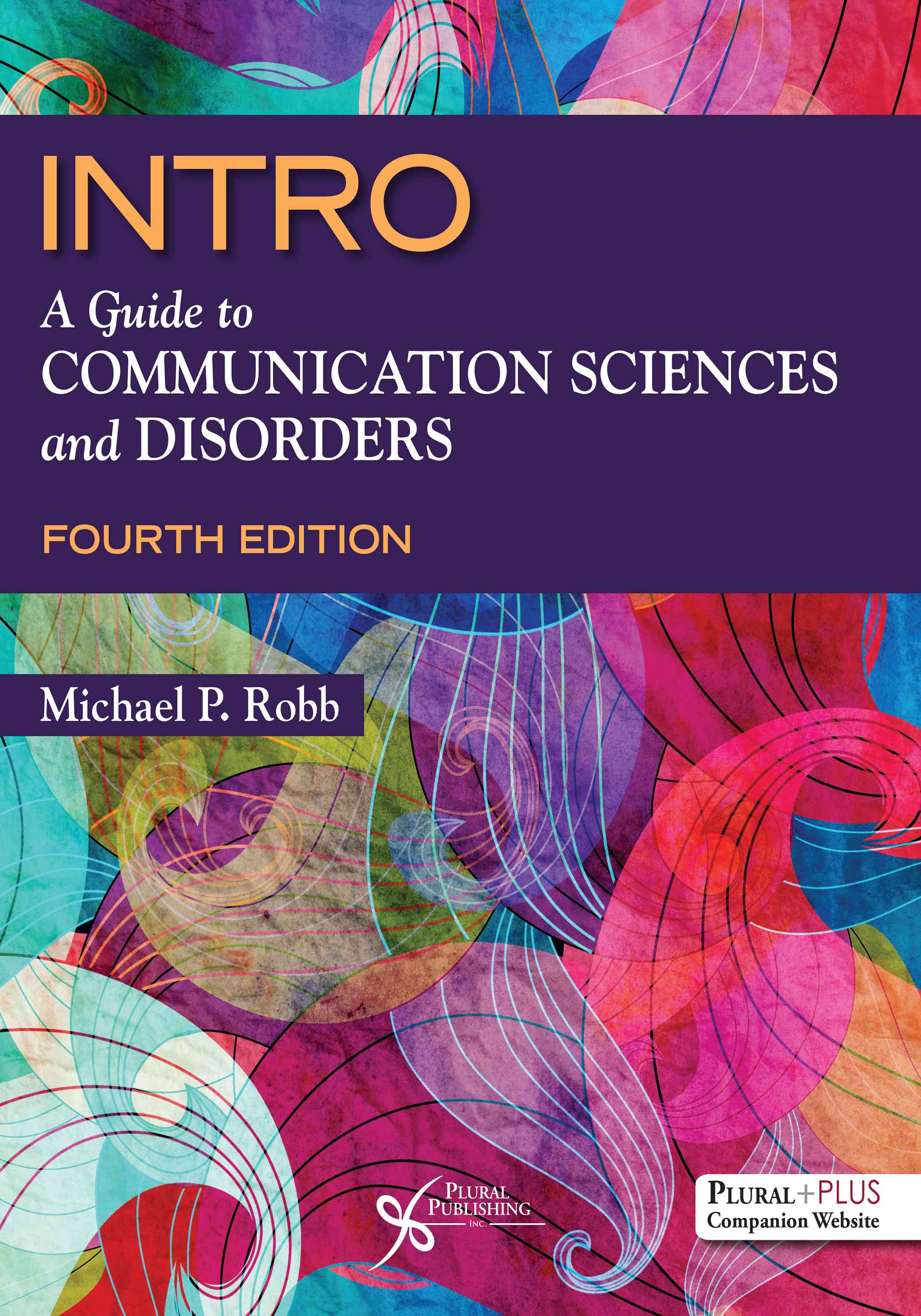
INTRO: A Guide to Communication Sciences and Disorders
Fourth Edition
Michael P. Robb
Details: 412 pages, Full Color, Softcover, 8.5" x 11"
ISBN13: 978-1-63550-476-7
© 2025 | Available

Communication Sciences and Disorders Across the Lifespan
First Edition
Patricia A. Prelock, Ashley Brien
Details: 487 pages, Full Color, Softcover, 8.5" x 11"
ISBN13: 978-1-63550-453-8
© 2026 | Available

